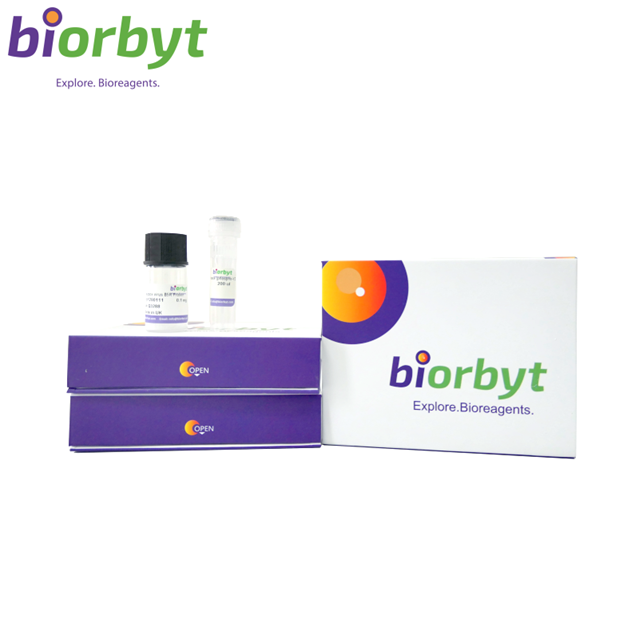You have no items in your shopping cart.
Cart summary

Human Leptin tA Protein
Catalog Number: orb426844
Product Properties
| Catalog Number | orb426844 |
|---|---|
| Category | Proteins |
| Description | Recombinant of human Leptin tA protein |
| Form/Appearance | White lyophilized (freeze-dried) powder. |
| Buffer/Preservatives | The protein was lyophilized from a concentrated (1mg/ml) solution with 0.0045mM NaHCO3. |
| Purity | Greater than 98.0% as determined by:(a) Gel filtration analysis.(b) Analysis by SDS-PAGE. |
| Protein Sequence | The sequence of the first five N-terminal amino acids was determined and was found to be Ala-Val-Pro-Ile-Gln |
| Application notes | Protein content: Protein quantitation was carried out by UV spectroscopy at 280 nm using the absorbency value of 0.88 as the extinction coefficient for a 0.1% (1mg/ml) solution at pH 8.0. This value is calculated by the PC GENE computer analysis program of protein sequences (IntelliGenetics) |
| Source | Escherichia coli |
| Biological Activity | Leptin triple antagonist is capable of inhibiting leptin-induced proliferation of BAF/3 cells stably transfected with the long form of human leptin receptor. It also inhibits various leptin effects in several in vitro bioassays. |
| Solubility (25°C) | It is recommended to reconstitute the lyophilized Leptin Antagonist Triple Mutant Human Recombinant in sterile 0.4% NaHCO3, not less than 100µg/ml, which can then be further diluted to other aqueous solutions. |
| Storage | Stability: Lyophilized Leptin Antagonist Triple Mutant Human Recombinant although stable at room temperature for several weeks, should be stored desiccated below -18°C. Upon reconstitution at > 0.1 mg/ml and up to 2 mg/ml and filter sterilization Leptin mutant can be stored at 4°C or even room temperature for several weeks making it suitable for long term infusion studies using osmotic pumps. At lower concentration addition of a carrier protein (0.1% HSA or BSA) is suggested. Please prevent freeze-thaw cycles |
| Note | For research use only |
Images
Similar Products
Human Leptin tA Protein [orb426845]
Greater than 98.0% as determined by: (a) Gel filtration analysis. (b) Analysis by SDS-PAGE.
Escherichia coli
1 mg, 5 μg, 20 μg
Reviews
Human Leptin tA Protein (orb426844)
Based on 0 reviews
Participating in our Biorbyt product reviews program enables you to support fellow scientists by sharing your firsthand experience with our products.
Login to Submit a Review

